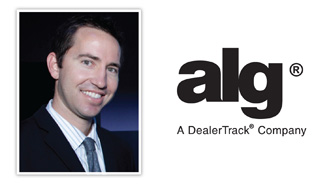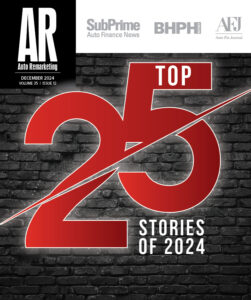ALG: Leasing Surge Expected Through 2015

The leasing market is expected to see a boom this year and then ride that wave over the next five years, ALG said in analysis released Thursday.
What individual brands will reap the benefits? According to ALG, the luxury brand that will show the largest uptick this year will be Land Rover, thanks to the brand’s bolstered residual values in the last year.
Among mainstream brands, ALG projects that Hyundai’s leasing hikes in the next few years will be the largest.
ALG also predicted that the disparity in residual strength between brands will remain on a downward slope. This points to a leasing market that will become more and more competitive for luxury makes as well as mainstream brands, ALG suggested.
“What we expect to see for the next several years is a very positive environment for leasing due to low used vehicle supply resulting in stronger used vehicle values, historically low interest rates and an easing of credit requirements as the overall economic recovery begins to take hold,” explained Eric Lyman, ALG’s director of residual value solutions.
“As a result, leasing is emerging as an excellent option for dealers looking to move inventory and for buyers eager to get into new vehicles at competitive prices,” he added.
Delving into some of the specifics of the projected leasing surge, ALG said it believes that by next year, luxury brands will likely have a lease penetration in the neighborhood of 43 percent. ALG projects that the mainstream side of the market will show gains during the next two years, growing to command a 17.5-percent lease penetration level.
“Numerous brands are expected to capitalize on this leasing resurgence, based on the ALG 2011 March/April edition and current high residual values forecasts, which allows them to offer highly competitive monthly lease payments,” officials noted.
Among luxury brands, the five with the highest residuals are as follows:
1. Land Rover
2. Infiniti
3. Acura
4. Audi
5. Lexus
For mainstream, the ranking of residual strength is:
1. Mini
2. Subaru
3. Mazda
4. Honda
5. Hyundai
Rebound in the Used-Vehicle Market
Moving along, part of the latest Industry Report from ALG delved into the recovery in the used-vehicle market.
ALG began its used-vehicle market analysis by recapping the shifts that occurred in light of the punches the auto industry took from the recession. ALG recalled that the industry took its biggest knock from the recession during 2008 to 2009.
Consumers had less disposable income and changed how they spent their money. ALG said consumers were “transitioning away from premium, luxury brands toward mainstream brands for trade-in vehicles.”
Another increasingly dominant trend during this time was consumers shifting to buy used or certified pre-owned instead of new.
As consumers have shifted their spending habits to cut back on household consumption during the recession, there has been a dramatic used-vehicle uptick for several CPO program and other used-vehicle outlets, ALG noted.
Officials shared that “there has often been a stronger recovery in the used-car market over new-vehicle sales during and following a recessionary period, usually with this demand not returning to normal for a number of years following the end of the recession.”
ALG pointed to R.L. Polk & Co. data that indicates approximately a 7-percent year-over-year hike in used-vehicle sales during 2010.
“With pent-up demand for the used-vehicle market on the rise, limited supply of vehicles returning to the used market beginning in 2009 has strengthened used-car prices,” officials shared. “Used-vehicle prices rebounding are often a precursor to a new market recovery, and ALG has a positive outlook for further recovery expected in the economy for 2011.”
Moving along, to illustrate the narrowing disparity between new and used-vehicle demand, ALG shared the results of one of the questions from its bi-annual Automotive Consumer Attitude Survey.
The question asked respondents “Will your next automobile most likely be a used or new vehicle?”
In spring 2009, 57 percent said new and 43 percent said used, with similar results for the fall (58 percent new, 42 percent new). This is quite different that the fall of 2007 — which was before the recession — when 66 percent said they would buy new and 34 percent would go used.
“While used-vehicle demand has grown during the recession, this increase in demand has also driven auction values higher, and presents a downside as the premium between new- and used-vehicle demand will widen again as the economy recovers, putting additional pressure on used-vehicle prices,” officials shared.
Continuing on, ALG talked about the adjustment made for used-car demand in its March/April 2011 edition.
“During the recession, auction values plummeted with the BLS Used Vehicle CPI hitting its low point of 121.1 in March 2009,” it noted. “By the end of 2009, the economic downturn had lessened, and consumers started moving into the used market. Through the boost of used-vehicle sales, the BLS index had increased 16.3pts, representing 9.1-percent Y-O-Y growth, with strong growth continuing through 2010.”
Analysts added that past recessions had seen the used side of the market repair quicker than the new side. This had led to a diminishing used-to-new premium gap when economy improved.
“ALG believes that its previous expectations for the longevity of the demand growth were slightly over-inflated and has applied an adjustment to all residual values of ~0.5ppts for this edition,” it shared.
Overall Residual Impacts
Moving on, ALG summarized what it believes will be the overall impact from economic factors on residual values. Its report delved the effects of the housing market, used supply and gas prices.
“In total, the forecast changes in the economic factors have a residual value impact in 36 months ranging from ±1 ppt versus the previous edition, depending on a vehicle’s sensitivity to housing, supply and gas prices,” ALG noted.
Officials went on to explain that is edition is the most seasonally positive. That is why depreciation is not as steep as it is in other editions. The average depreciation is typically close to 1 percentage point.
“Vehicles with higher normal depreciation will show larger declines for this category,” ALG shared. “Overall, total declines (includes macroeconomic changes and normal depreciation) for the edition ranged from 0-2.5 ppts.”
Looking forward, ALG doesn’t anticipate the May/June edition will be as positive as the most recent one, although just “slightly less,” as normal declines are projected to average between 1 percentage points and 1.5 percentage points.
That rate is just a bit higher than the average for March/April.
“Currently no specific changes to the economic forecasts have been planned, but ALG will be closely monitoring the consensus of forecasting sources and economic information relating to the gas and oil market, housing recovery and labor market and may make changes concerning the strength of the economic recovery in future editions,” ALG stressed. “On the model level, ALG is planning on reviewing current position versus actual data.”

 View The Latest Edition
View The Latest Edition

